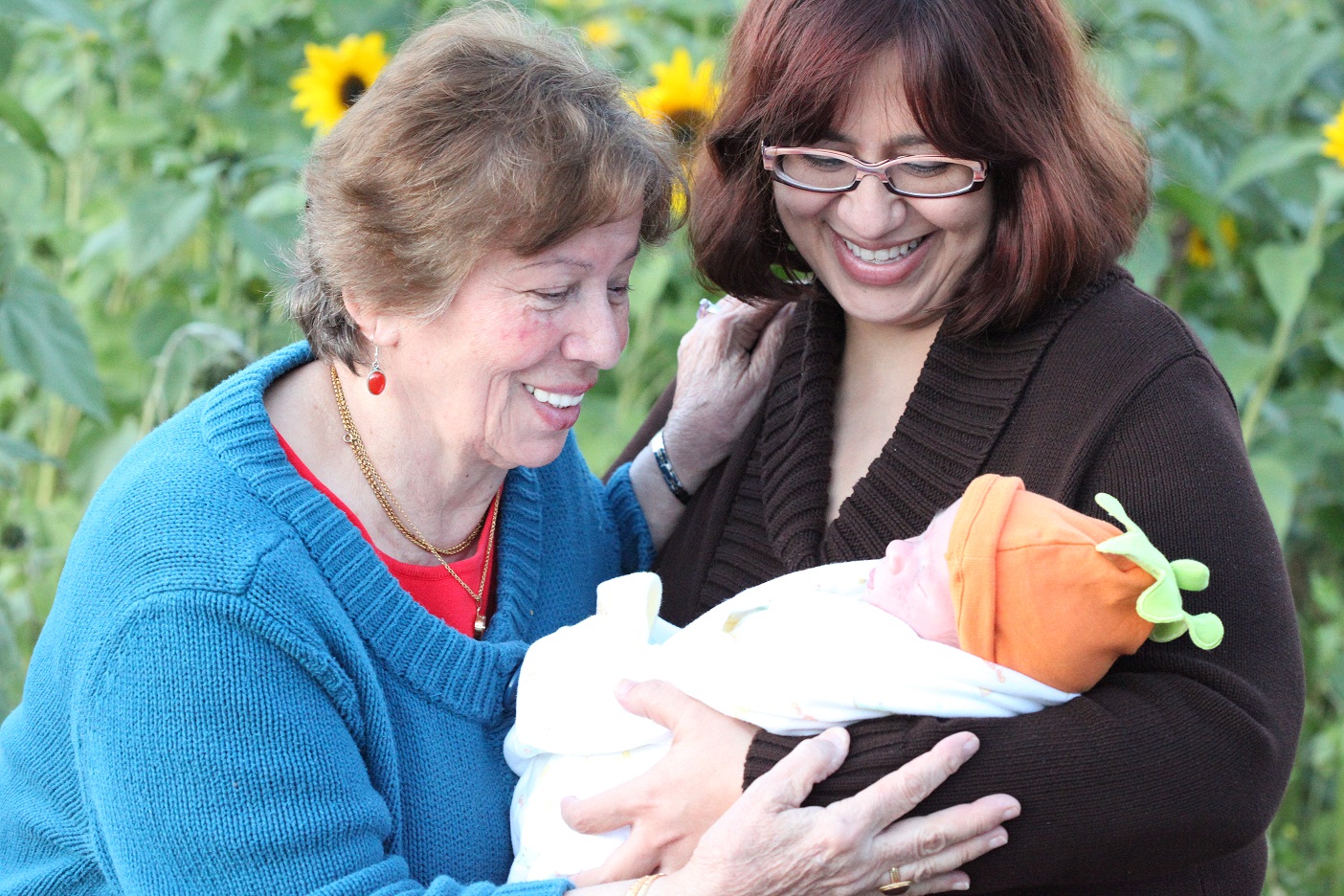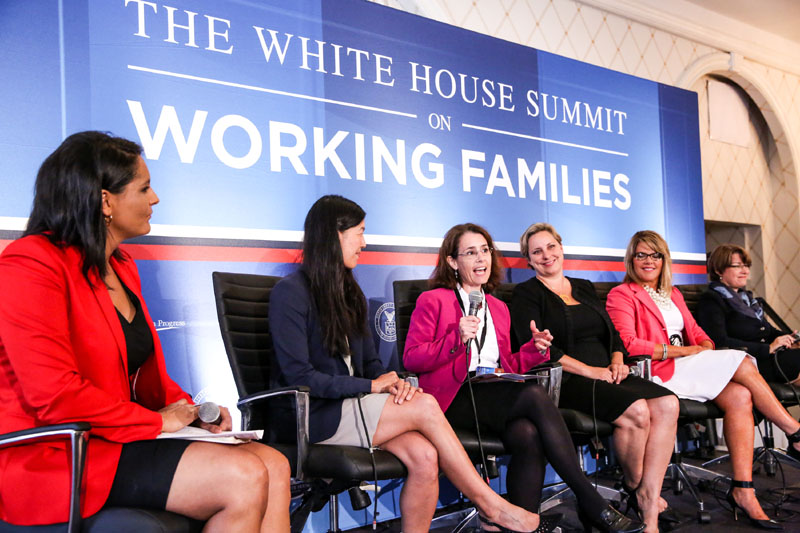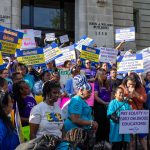This is the final installment in our series on the White House Summit on Working Families, which The Women’s Foundation attended earlier this summer. Be sure to read the other posts in our series.
As a foundation focused on economic security work, “care” is both a central and pervasive challenge – and an opportunity to influence the trajectory of multiple generations. Child care allows parents to work, or to complete the education and training necessary to find a good job. But quality early care and education is expensive, and not always accessible – in terms of location, or the hours that may or may not match up with a worker’s schedule. Quality also comes at a cost: “In 2012, in 31 states and the District of Columbia, the average annual cost for an infant in center-based care was higher than a year’s tuition and fees at a four-year public college.” That said, quality early care and education provides critical early learning opportunities, and helps prepare children for kindergarten and beyond. For low-income children in particular, early learning can help close the “readiness gap” that influences educational attainment and economic security in the long-term.
As a women’s foundation, these issues are even more central. Women make up a large percentage of the care workforce (in the child care and early learning space, but also home care and eldercare workers). These professions are low paying. Look at the formal child care workforce alone, and you’ll see that women make up nearly 95% of the workforce. Those jobs are also some of the lowest paying in the US: of the 823 occupations tracked by the Bureau of Labor Statistics, only 24 professions earn less than child care workers. Looking beyond the formal care workforce, women are also largely informally impacted by the “sandwich generation,” no matter their profession – that is, they are taking on the responsibility of caring for children and aging parents simultaneously. This has a tremendous impact on work/life balance, employment opportunities, and earning potential.
The White House Summit on Working Families featured a panel discussion on caregiving. A few highlights from the conversation…
- On quality early care and education: In decisions about child care, quality is not always the driver of parent choice. Other factors could be cost, convenience, or the comfort of knowing a family member or neighbor. In practice and in policy, we have to find ways to get beyond the amorphous “quality” concept that may or may not resonate with parents.
- On economic security: As Gail Hunt, CEO of the National Alliance for Caregiving, pointed out, the burden of balancing work and family has a long-term impact on economic security. Seventy-five percent of people with caregiving responsibilities are also working; two-thirds of those people find that they have to make some sort of workplace accommodation to allow them to handle their caregiving responsibilities. The resulting loss in wages, pension, and social security for each of these women: $325,000 over the period that the worker is also a caregiver.
- On the case for employers: David Lissy, CEO of Bright Horizons, pointed out the impact of “caregiving stress” on workers. He makes the economic case to employers for workplace flexibility and balancing caregiving responsibilities: caregiving stress cuts into worker productivity, and it impacts the cost of employer-sponsored healthcare. There’s an economic case for employers to be on board with changes in policy that influence this issue.
What was missing from the Summit conversation?
- Robust discussion of improving pay for the caregiving workforce. It was only a question from the audience, at the end of the panel session, that sparked discussion around low pay. In response, Duffy Campbell of the National Women’s Law Center pointed to the need for policy solutions – that the market isn’t working for the workers who are parents/caregivers, or the workers who are caregiving providers. I only wish this was a more central piece of the discussion. Higher pay for this workforce would impact the economic security of this mostly-female workforce; it would also help translate to higher quality early care and education programs in the community.
- Race. I was happy that gender was often discussed at the Summit, but overall, race was left out of the conversation. The same was true in the panel on caregiving – even though, for example, 16% of the child care workforce are African American and 19% are of Hispanic or Latino origin.
- How issues of caregiving begin early. The Women’s Foundation invests in the economic security of women AND girls. When we planned our strategy for investing in girls , we repeatedly heard from providers and advocates the need to recognize the caregiving responsibilities that girls and young women were taking on at home, and the impact of those responsibilities on their education, afterschool options and workforce participation. When reliable care isn’t available for younger siblings, older girls in the family often step in. Solving caregiving challenges has the potential to impact multiple generations at once.
It certainly feels like care is having a moment in the spotlight – from the Summit, to national conversations about Pre-K access and media stories talking about the crisis of care. We can only hope this moment turns into a movement with real solutions for families.
_________________________________________________________________________________________
If you’re interested in care issues, check out more on The Women’s Foundation’s Early Care and Education Funders Collaborative. Interested in further reading? Check out the following resources:
- “Listening to Workers: Child Care Challenges in Low-Wage Jobs.”
- The New York Times recently featured a story on a working mom about her struggles with an hourly job and the challenges of consistent and quality child care:
- YouTube video of the White House Summit session on “Caregiving”




